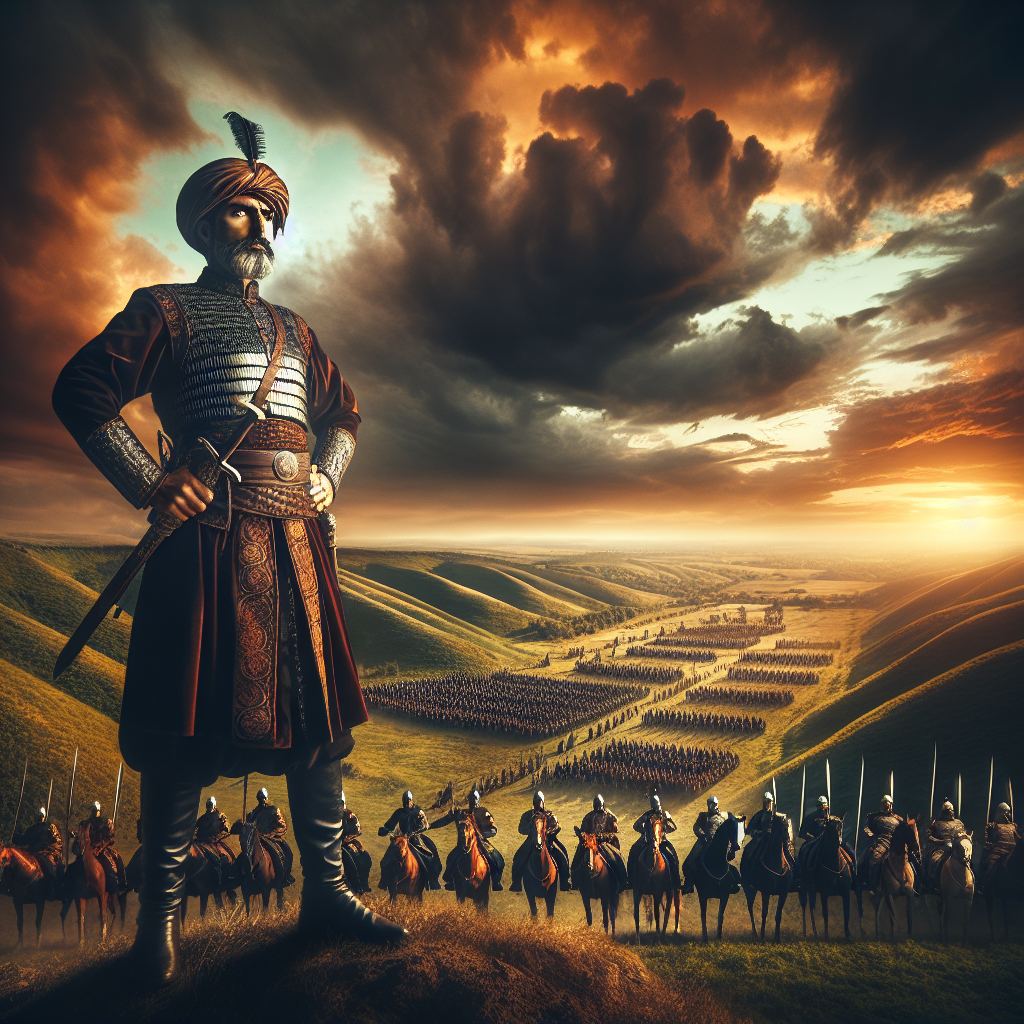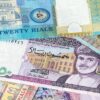Sultan Mehmed II, often remembered as Mehmed the Conqueror, was a pivotal figure in world history whose impact on the Ottoman Empire and beyond resonates even today. His reign marked a turning point for the Ottomans, transforming them from a regional power to a dominant empire influencing two continents. For students exploring the historical tapestry of rulers who have altered the course of history, Mehmed II stands as a fascinating character. This post will unravel the life, accomplishments, and profound influence of Mehmed II, providing insights into his multifaceted contributions.
Mehmed II’s Dynamic Era
Mehmed II’s life is a story of ambition and change. Born in 1432, he ascended the Ottoman throne at a time when the empire was poised for expansion. His reign, beginning in 1451, was significant not only for its military conquests but for the cultural and administrative innovations that propelled the Ottomans into a golden age. Understanding Mehmed II’s significance requires a deep look into the geopolitical landscape of the 15th century. At this time, the Byzantine Empire was in decline, while the Ottomans were rising, eager to assert their dominance and fulfill their dynastic ambitions.
The era before and during Mehmed II’s rule was marked by political changes and territorial ambitions. The Byzantine Empire, once a bastion of Christian rule in Europe, had weakened significantly. Its capital, Constantinople, was the last vestige of its former glory, surrounded by Ottoman territories. Mehmed II was acutely aware of the symbolic and strategic importance of capturing Constantinople. His vision extended beyond mere conquest; he sought to reshape the political map of the region.
The Visionary Sultan Mehmed II and His Lasting Legacy
The decline of the Byzantines offered an opportunity for the Ottomans to assert their dominance. Mehmed’s predecessors had expanded Ottoman territories, but it was under Mehmed II that the Ottomans truly emerged as a formidable power. His reign set the stage for an era where the Ottomans would become a central force in global politics, bridging East and West.
Conquest of Constantinople (1453)

One of the most defining moments of Mehmed II’s reign was the conquest of Constantinople in 1453. The city, renowned for its strategic location and rich history, had long been an object of desire for many conquerors. Mehmed II’s campaign to capture it was meticulously planned and executed with military prowess.
The events leading to the siege involved careful preparation. Mehmed II amassed a formidable army and employed innovative tactics to breach the city’s formidable defenses. The use of massive cannons, a revolutionary military technology at the time, played a crucial role in breaking through the walls of Constantinople. His strategic placement of troops and effective blockade of the city’s ports showcased his understanding of warfare’s complexities.
The fall of Constantinople was a watershed moment in history. It signaled the end of the Byzantine Empire and marked the beginning of Ottoman supremacy in the region. The city’s capture was not only a strategic victory but a symbolic one, establishing Mehmed II as a ruler of immense vision and determination.
Expansion of the Ottoman Empire
Following the conquest of Constantinople, Mehmed II embarked on a series of campaigns to expand the Ottoman Empire further. His focus on the Balkans and Anatolia demonstrated his commitment to extending Ottoman influence and securing the empire’s borders.
Mehmed’s campaigns in the Balkans were characterized by decisive battles and strategic alliances. He recognized the importance of controlling key territories and fortified cities, enabling the Ottomans to project power across Europe. His conquests included cities like Belgrade and territories in Bosnia and Herzegovina, which became integral parts of the growing Ottoman realm.
The territorial expansion under Mehmed II had profound implications for the empire. It strengthened the Ottomans’ geopolitical position and allowed them to exert influence over diverse populations and regions. The incorporation of new territories also facilitated economic growth, as trade routes expanded and resources became more accessible.
Cultural and Architectural Contributions
Mehmed II’s reign was not solely defined by military conquests. He was a patron of the arts and architecture, leaving behind a cultural legacy that enriched the Ottoman Empire. His support for artistic and intellectual pursuits reflected his appreciation for cultural diversity and innovation.
Notable among Mehmed’s architectural achievements was the conversion of the Hagia Sophia, a symbol of Byzantine Christianity, into a mosque. This transformation symbolized the fusion of cultures and the Ottomans’ commitment to their Islamic heritage. Under his patronage, new mosque constructions, such as the Fatih Mosque, showcased the empire’s architectural prowess and religious devotion.
Mehmed II’s cultural policies had a lasting impact on the identity and legacy of the Ottoman Empire. By fostering an environment where art and literature thrived, he ensured that the Ottomans became not only a military power but also a center of cultural excellence.
Administrative Reforms and Governance
Mehmed II was a visionary ruler who understood the importance of effective governance in maintaining a vast empire. His reign saw the implementation of administrative reforms that centralized power and established a robust framework for governance.
One of the key innovations during his reign was the introduction of the millet system. This system allowed for the management of a multi-religious empire by granting religious communities autonomy in their internal affairs. It promoted religious tolerance and coexistence, a hallmark of Mehmed II’s approach to governance.
Mehmed’s centralized governance model laid the foundation for future Ottoman rulers. By streamlining administrative processes and ensuring efficient communication across the empire, he created a government that could respond effectively to challenges and opportunities.
Diplomatic Relations and International Politics
Mehmed II was not only a military strategist but also a skilled diplomat. His reign was marked by strategic alliances and treaties that enhanced the Ottoman Empire’s standing in international politics.
Mehmed II’s diplomatic strategies were aimed at maintaining stability and expanding influence. He recognized the importance of forming alliances with European powers and established key treaties that safeguarded Ottoman interests. His understanding of international politics allowed him to balance the empire’s interests with those of other states.
The role of diplomacy in Mehmed II’s reign cannot be overstated. It enabled the Ottomans to secure their borders, forge beneficial relationships, and avoid unnecessary conflicts. Mehmed’s diplomatic acumen was a testament to his comprehensive approach to statecraft.
Religious Policies and Tolerance
Mehmed II’s approach to religious diversity was marked by pragmatism and tolerance. He understood the complexities of governing a multi-religious empire and implemented policies that promoted coexistence.
One of the hallmarks of Mehmed’s religious policies was his promotion of religious tolerance. He recognized the value of allowing different religious communities to maintain their beliefs and practices. This approach fostered loyalty and cooperation among diverse populations, contributing to the empire’s stability.
Mehmed II’s establishment of an Islamic legal framework was significant in shaping the empire’s identity. It provided a cohesive legal system that balanced religious principles with practical governance, ensuring justice and order throughout the empire.
Military Innovations and Strategies
Mehmed II was a pioneer in military innovation, transforming the Ottoman military into a formidable force. His leadership saw the integration of new technologies and tactics that revolutionized warfare.
Under Mehmed’s guidance, the Ottoman military underwent significant advancements. The use of artillery, particularly cannons, became a defining feature of their campaigns. Mehmed’s ability to modernize his forces ensured that the Ottomans remained a dominant military power.
Mehmed II’s military strategies had a lasting impact on future campaigns. His emphasis on innovation and adaptability set a precedent for subsequent rulers, enabling the empire to respond effectively to evolving threats and opportunities.
Legacy of Mehmed II
The legacy of Mehmed II extends beyond his lifetime, leaving an indelible mark on history. His accomplishments as a ruler, conqueror, and patron of the arts continue to influence the narrative of the Ottoman Empire.
Mehmed II’s influence can be seen in the achievements of subsequent Ottoman rulers. His emphasis on effective governance, cultural patronage, and military innovation became guiding principles for those who followed in his footsteps. His legacy is a testament to the enduring impact of his vision and leadership.
Comparisons with other notable rulers in history highlight Mehmed II’s unique contributions. Like Alexander the Great and Charlemagne, Mehmed’s ability to reshape the political and cultural landscape of his time cements his place as a significant figure in world history.
Reflecting on Mehmed II’s Significance
Sultan Mehmed II’s reign stands as a remarkable chapter in history. His vision, ambition, and achievements continue to captivate the minds of students and historians alike. Through his conquests, reforms, and cultural patronage, Mehmed II transformed the Ottoman Empire into a global powerhouse.
His legacy serves as a reminder of the complex interplay between power, culture, and governance. For students, his story offers valuable lessons about leadership, innovation, and the impact of visionary rulers on the course of history.
To explore further, consider examining Mehmed II’s contributions in the context of other historical figures who have left an indelible mark on the world. Their stories together weave a rich tapestry of human achievement and aspiration












![Sultan Salahuddin Ayyubi Episode 51 [Season 2] Urdu Subtitles](https://top20series.com.pk/wp-content/uploads/2025/04/WhatsApp-Image-2024-10-15-at-02.38.25_3ef2e1db-1024x1024-1-100x100.jpg)